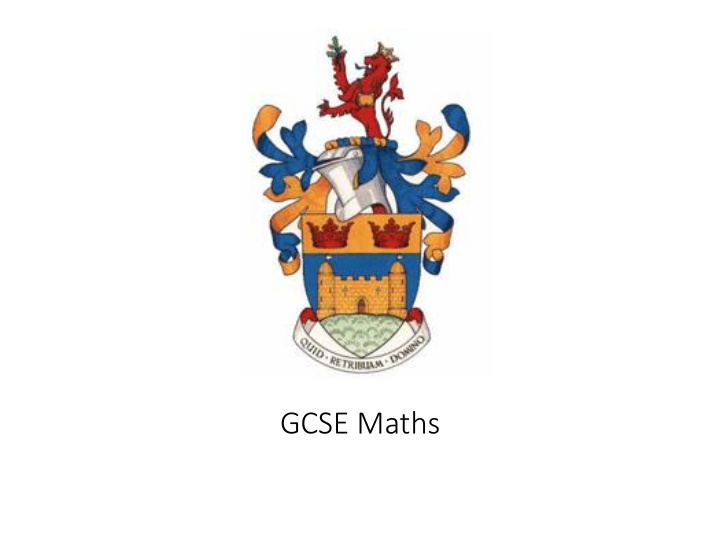



GCSE Maths
Positivity and Support
Structure and style of the exam 3 papers – 1hr 30 mins each out of 80 marks Paper 1 is a non-calculator paper Paper 2 is a calculator paper Paper 3 is a calculator paper There is a large emphasis on problem solving.
Foundation Breakdown Foundation papers range from grades 1 to 5 There is a much greater emphasis on Ratio and proportion and number skills on the foundation tier, it is really important that students spend time developing these skills.
Higher Breakdown Higher papers range from grades 4 to 9 There is a much greater emphasis on Algebra on the higher tier, it is really important that students spend time developing these skills.
What do we mean by a greater emphasis on problem solving? Q. 9 – 5 marks, Problem Solving
Support from School • Revision guides (CGP AQA 8300) these can be ordered through parent pay • Past papers handed out by teachers, older past papers available online ( Mathsgenie or corbett maths). • Intervention classes on afterschool on Wednesday • Throwback Thursdays
Corbett Maths The best way to revise maths is to do maths.
Formulae to be learnt
Formulae to be learnt
Final Tips • Ensure your child has a Casio scientific calculator – can be purchased through parent pay. • Formulae must be learned ready for the exams. • The key to success will be independent study and revision but making use of the support at school – the best way to revise maths is to do maths.
Recommend
More recommend